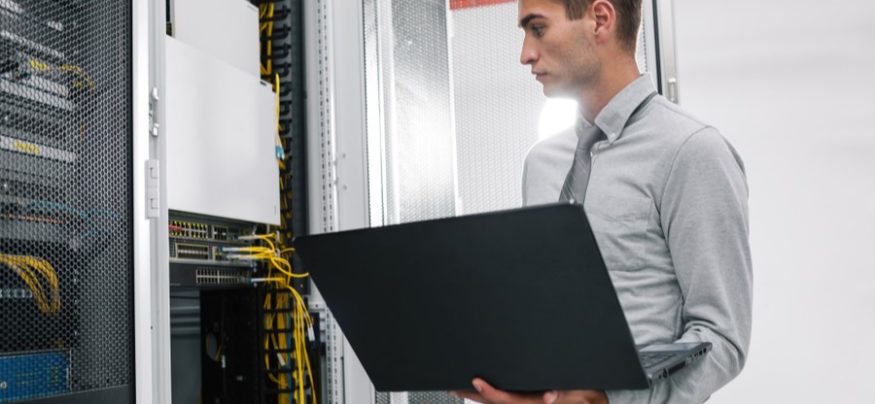Data centers are anxious to adopt solid state drives (SSDs) for their higher performance and lower operating costs than traditional hard disk drives (HDDs), but capital cost and endurance concerns have held many organizations back. In write-heavy applications, the endurance of consumer-class drives has limited their usefulness, while specialized write-optimized drives can be expensive.
Samsung has released several new SSDs intended to remedy these problems for the data center, including the 860 DCT series the, 883 DCT series, the 983 DCT series and the 983 ZET series. The 883 DCT drives are 2.5-in. 7mm SATA SSDs. The 983 DCT series are U.2 2.5-in. 7mm or M.2 22mm × 110mm SSDs. The 983 ZET SSDs are PCIe 3.0 4x NVMe 1.2b HHHL add-in cards that use high-performance, non-volatile memory.
These new lines aim to reduce the pain for engineers trying to create new storage in their application servers and storage servers in the data center.
Storage Designed With the Data Center in Mind
These new SSDs are all engineered specifically for the data center with high capacities, high endurance and low power requirements. These drives are also more available in the marketplace, being engineered for enterprise data centers while also accessible enough for the growth-minded small or midsize business. Designed to endure 24/7 applications, these data center drives provide a better total cost of ownership (TCO) over traditional SSDs as well.
Understanding SSD Endurance and Over-Provisioning
Get your free guide to optimizing SSD over-provisioning for improved cell endurance. Download Now
The new drives are focused on efficiency, not only reducing the power necessary to run the drives — important when there might be as many as 20 drives in a server — but also reducing the amount of heat generated by each drive, which mitigates the cooling needs in each server and for the data center as a whole.
All the new data center SSDs can be managed with the Samsung SSD toolkit, which includes firmware updates, data erasure, overprovisioning setup and disk status. The toolkit can apply firmware updates to multiple drives in the same or different systems, rather than requiring that each drive be updated manually and individually. It can also collect statistics on groups of drives, ensuring that the administrator is notified if a drive or drives are starting to have problems, before it becomes a critical issue.
Samsung 883 DCT Series
The Samsung 883 DCT is a 2.5-in. 7mm data center SATA SSD optimized for read-intensive applications, high IOPS consistency, and with sequential reads up to 560MB/s, sequential writes up to 520 MB/s. Capacities range from240GB to 3.84TB and latency of up to 0.035 ms with 99.99 percent quality of service (QoS) and up to 28,000 IOps.
Samsung 983 DCT Series
The 983 DCT series are NVMe 1.2b, PCIe 3.0 x4 SSDs with sequential reads speeds of up to 3,000MB/s and sequential writes up to 1,900MB/s. They include 960GB and 1.92TB capacities, and support up to 540,000 IOps on reads and up to 50,000 IOps on writes, with a latency of 0.015 ms with 99.99 percent QoS.
Samsung 983 ZET Series of Ultra-Low-Latency SSDs
The 983 ZET series of SSDs are add-in cards that use a PCIe 3.0 slot and NVMe 1.2 interface to reach read speeds of 3,400MB/s and write speeds of 3,000MB/s. Their capacities are 480GB and 960GB, with write endurance of 8.5 drive writes per day (DWPD) for the 480GB model, and 10 DWPD for the 960GB model.
The 983 ZET is especially noteworthy for its extremely low latency — up to 0.03 milliseconds at 99.99 percent QoS for both reads and writes. It also supports up to 750,000 random read IOps.
Samsung 860 DCT Series
The 860 DCT is an advanced 2.5-in. SSD designed to meet and exceed the unique requirements of read-intensive, data-streaming data centers such as content delivery networks (CDNs). The 860 DCT works effortlessly as HDD replacement in entry-level servers. Specifically engineered for long-lasting performance, these drives include V-NAND technology, best-in-class terabytes written (TBW) levels, and a reinforced controller. They achieve higher efficiency and performance compared to legacy storage systems, with fewer servers, reduced power and cooling, and lower total cost of ownership (TCO). Maintenance is more efficient, too, with the provided Samsung Magician software.
Conclusion
From handling the looming challenges of artificial intelligence (AI), supercomputing and Internet of Things (IoT), to gaining higher performance and capacity in managing Big Data, to a more budget-friendly, cost-based approach — upgrading to SSDs should start with solutions that can not only address a diverse collection of needs for competitive enterprises, but are also accessible enough for the growth-minded small to medium-size business.
Need a closer look? Download this guide to improving your storage planning and evaluation processes.








